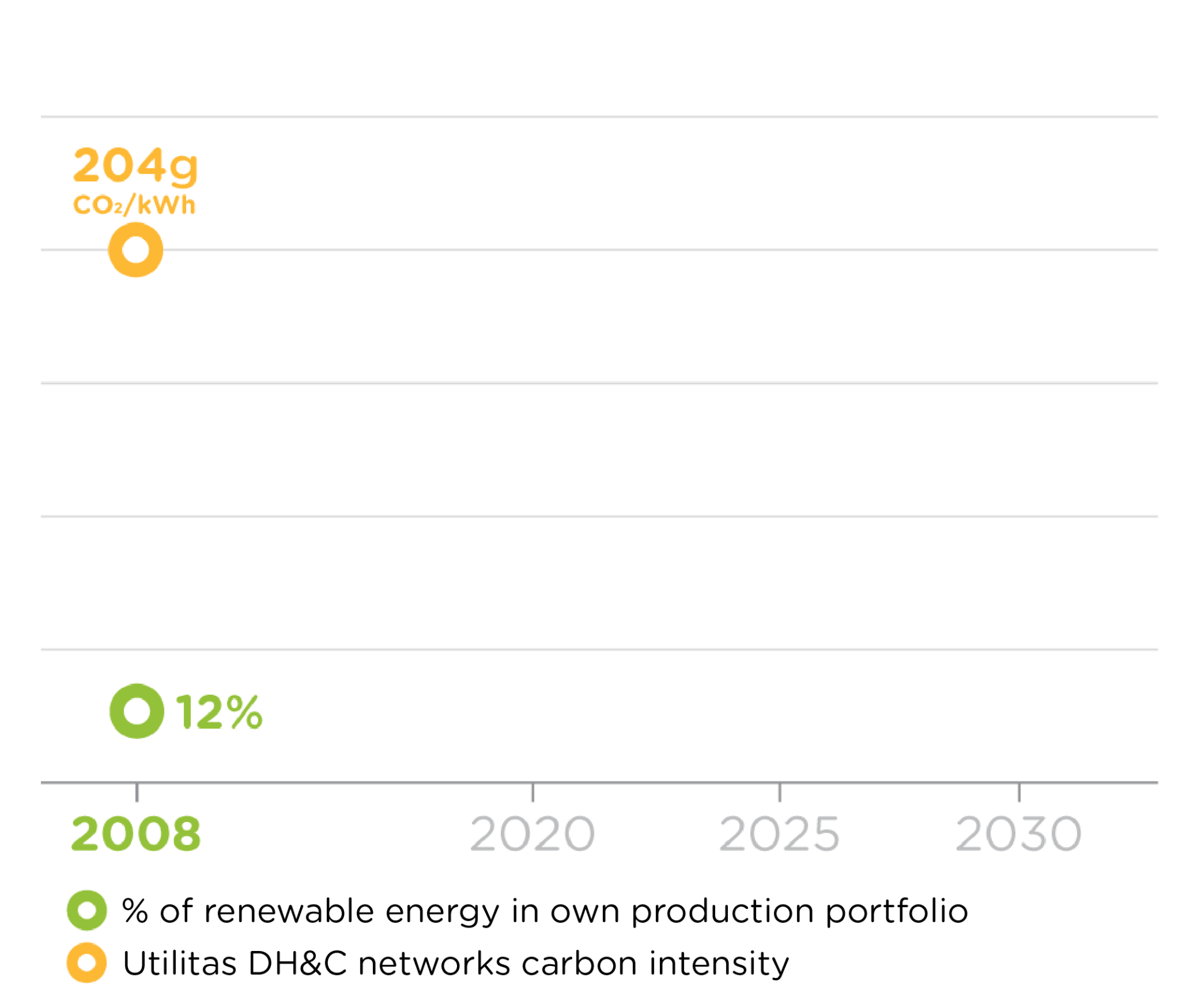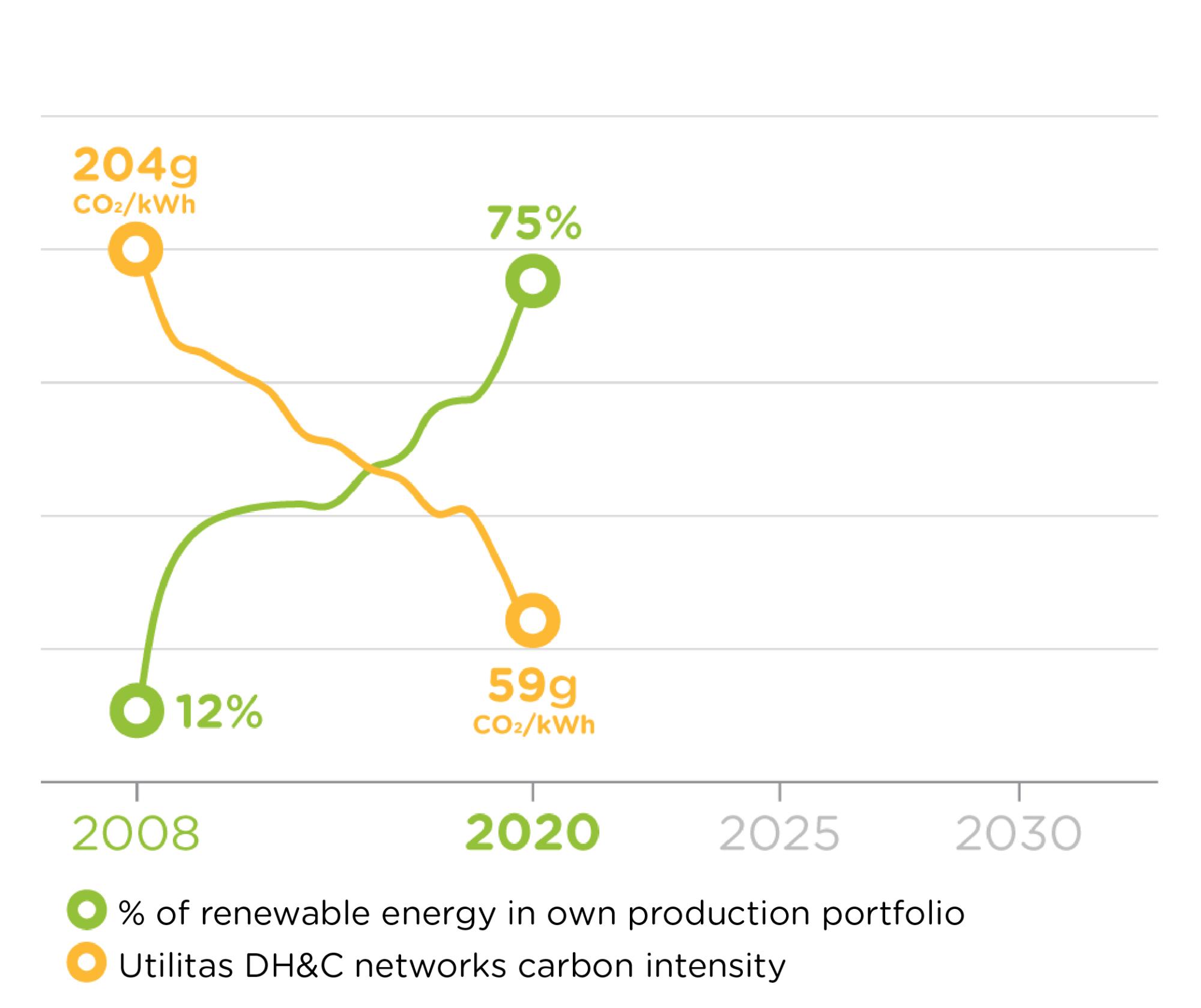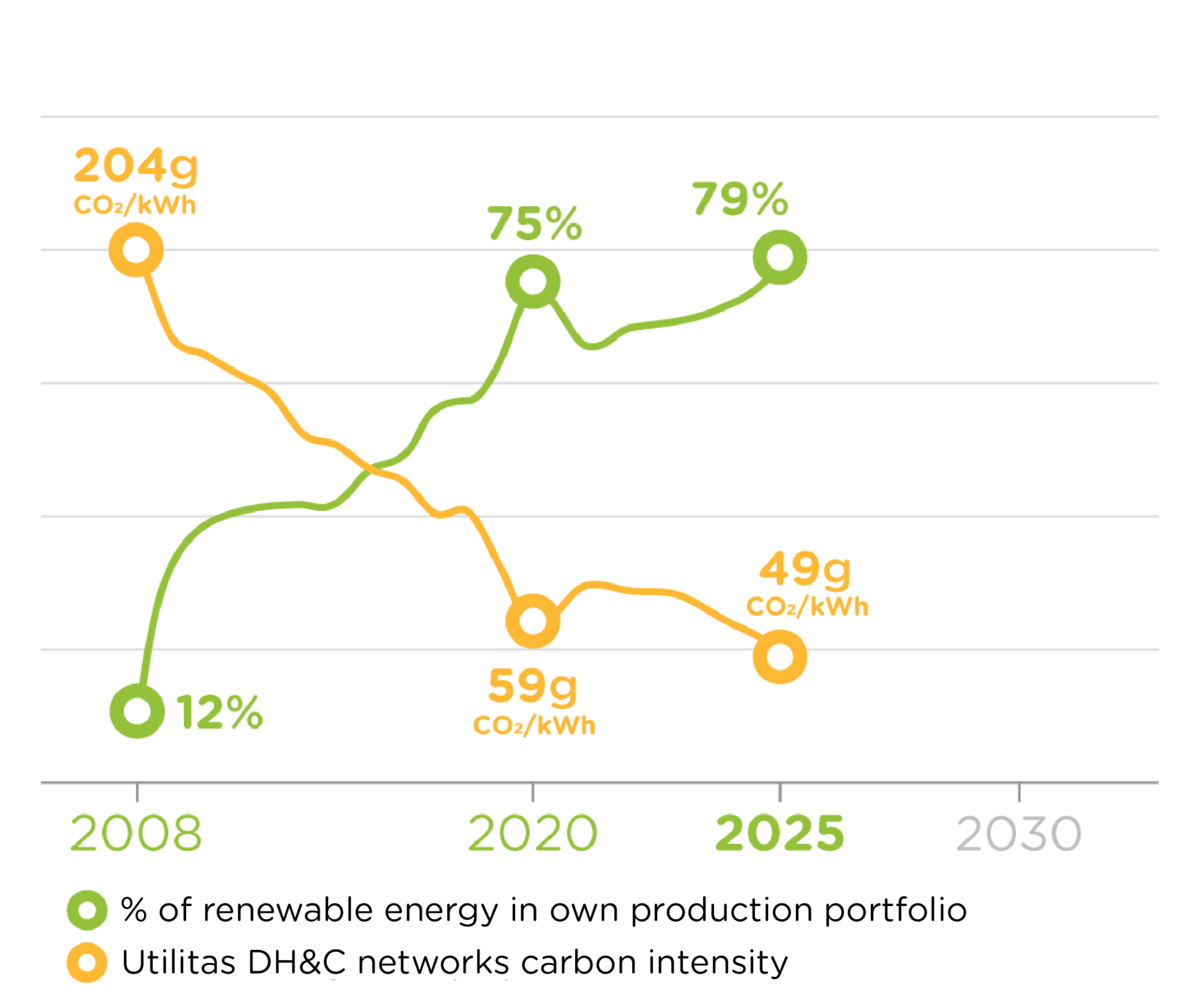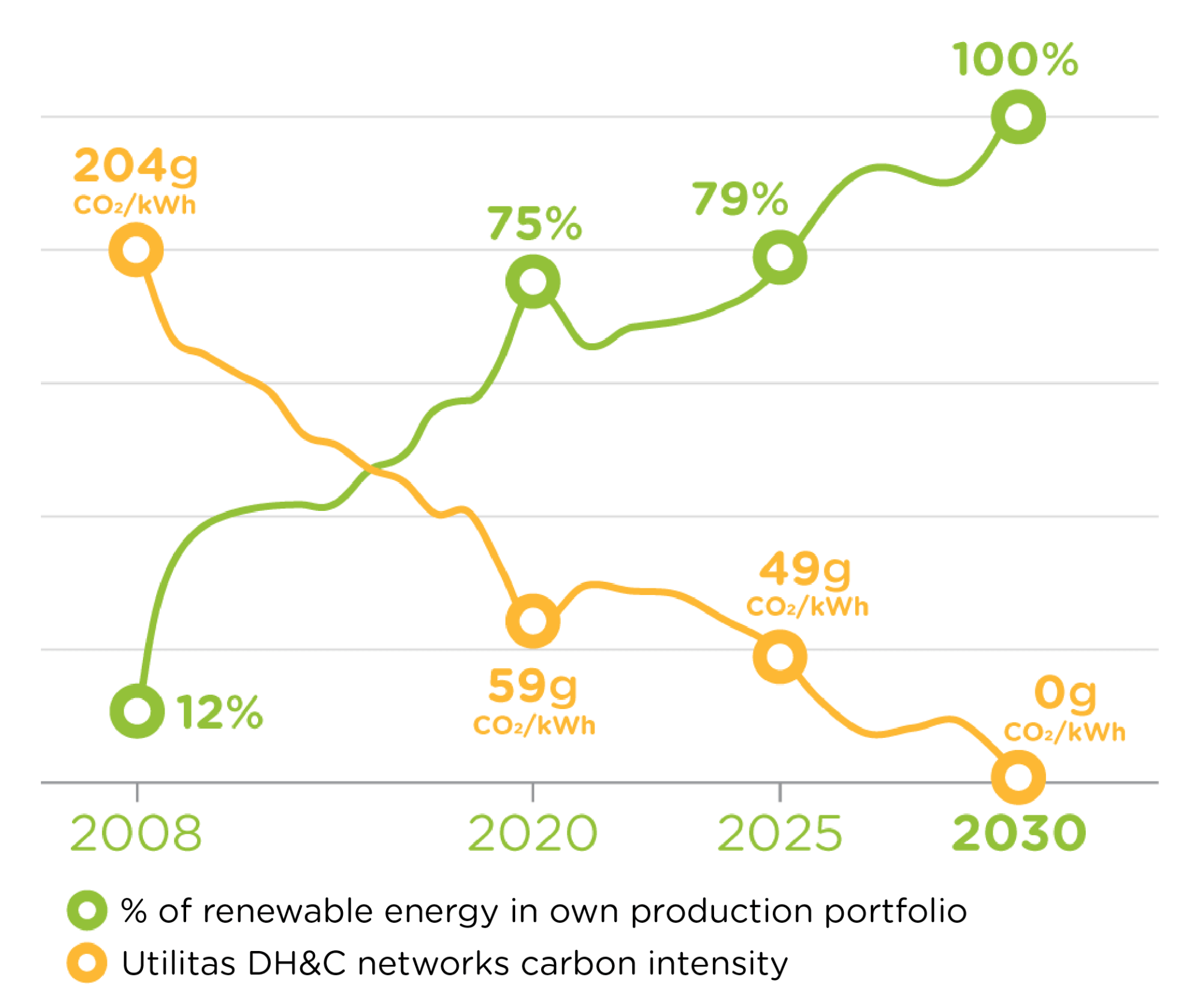Together we can stop global warming
Our mission is zero carbon emissions. This will allow us to preserve an environment that is still a healthy place for future generations to live in
In 2021, Utilitas developed its carbon neutrality strategy called “From Low to Zero”
Our objective is to reduce greenhouse gas emissions to zero by 2030 and adjust to the impacts of climate change. To do this, we will replace the use of import fossil fuels with local renewable sources. This will result in long-term sustainability of the company’s operations, increase security of supply and ensure that energy is affordable.
We have invested close to 500 million euros
into the green transformation
Thanks to investments and new renewable energy sources, we reduced the carbon footprint 70% by 2021. Utilitas CO2 emissions are already at a very low level (61 g CO2/kWh).
The carbon footprint of Utilitas can be considered to have three components
The Kyoto guidelines for accounting and reporting of CO2 emissions are used for calculations. European standard EN 15316-4-5:2017 was used for calculating waste heat emissions.
Scope 1
CO2 emissions generated from combustion of fuels
Scope 2
CO2 emissions generated from production of heat and power we consume
Scope 3
CO2 emissions from generation of heat purchased from other energy companies, fuel production, use of materials and maintenance of generation equipment
The amount of the CO2 footprint in 2023 measured in thousands of tonnes of CO2 total 226,732
Utilitas pathway to carbon neutrality
To achieve carbon neutrality, we will have to invest another 500 million euros, most of which will be spent on increasing energy efficiency and the wider implementation of new renewable energy sources.

2008

2008-2020
Until 2020, strong investments were made in establishing renewable fuel-based energy sources. Biomass and waste-powered cogeneration plants have been added to the district heating network, reducing the use of natural gas and the carbon footprint.

2020-2025

2025-2030
We believe in promoting sector coupling and utilizing new technologies and innovation for smart management of demand and supply. If all this is not enough, we will offset the emissions we create in other areas by reducing carbon emissions.

Big changes are accomplished together
Our clients, local governments, national government agencies and other partners all have a big role in making our ambitious plan happen.
Join district heating